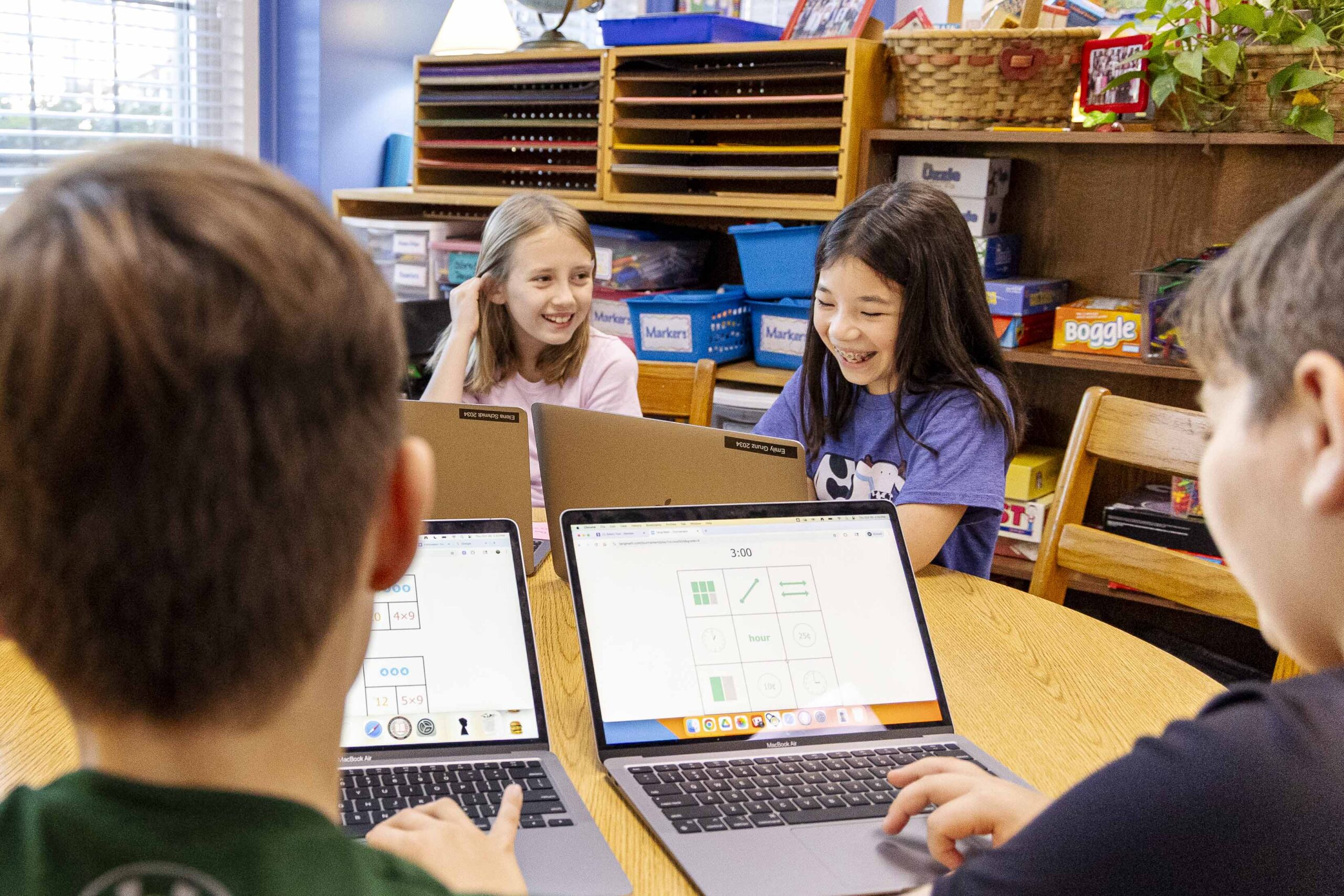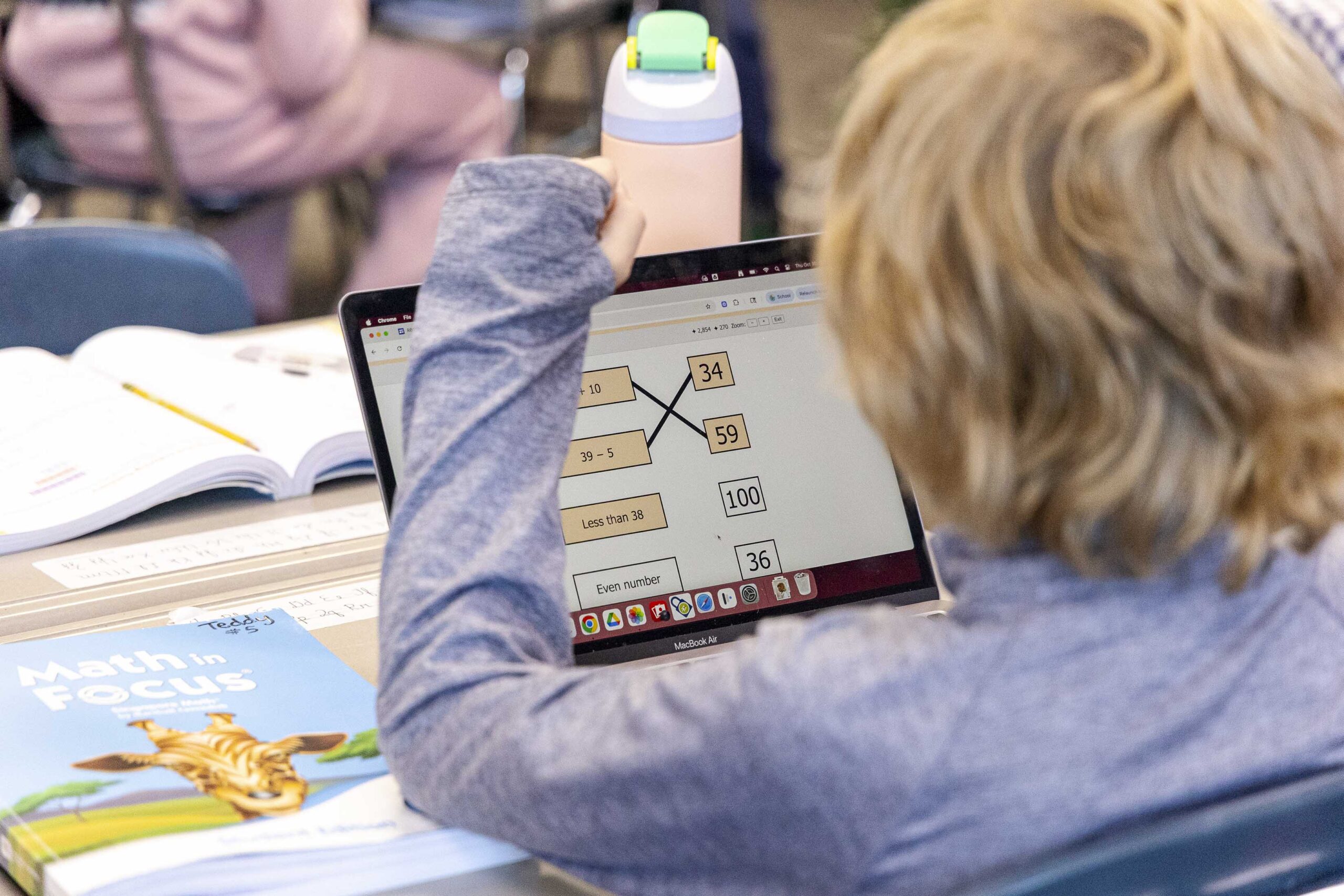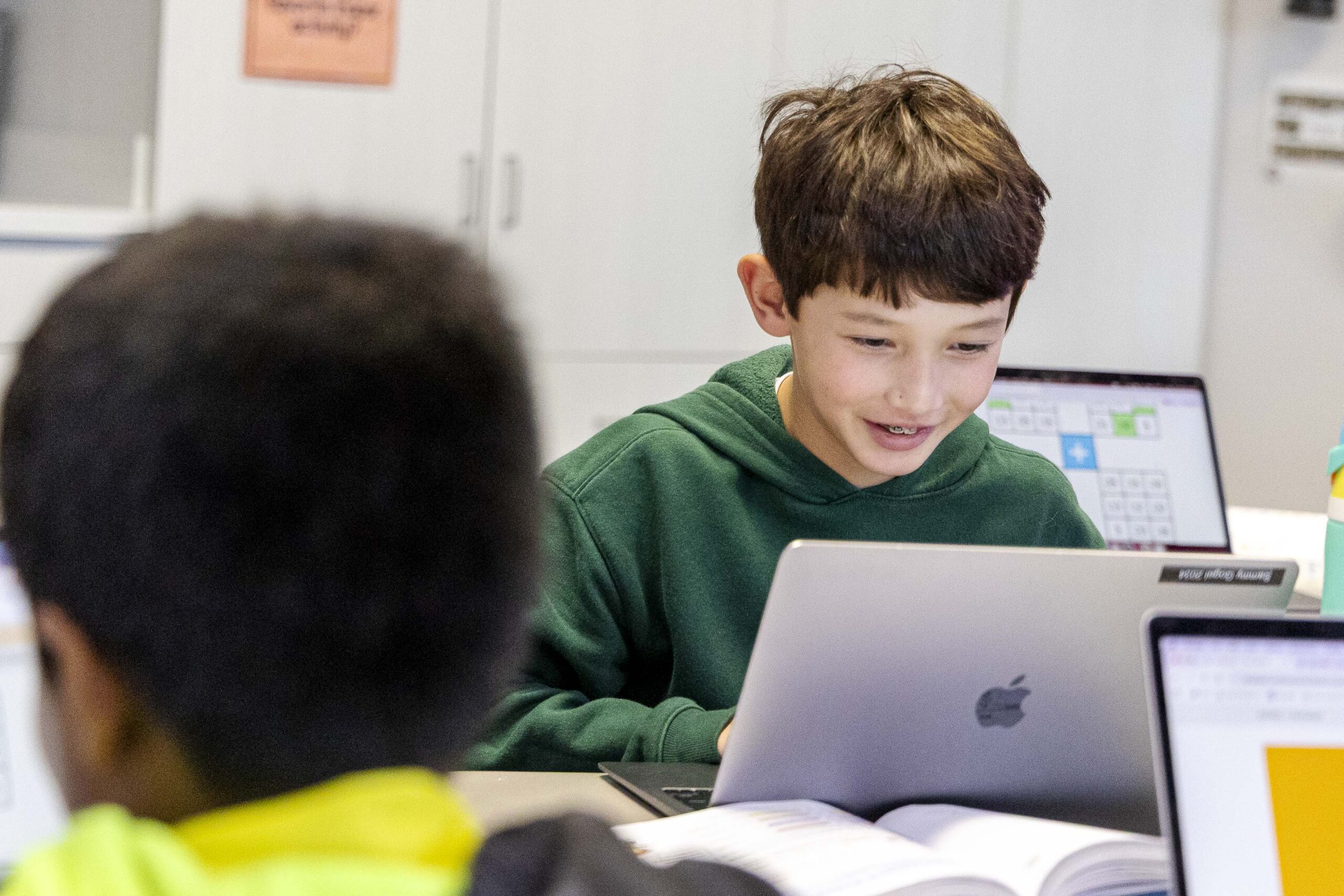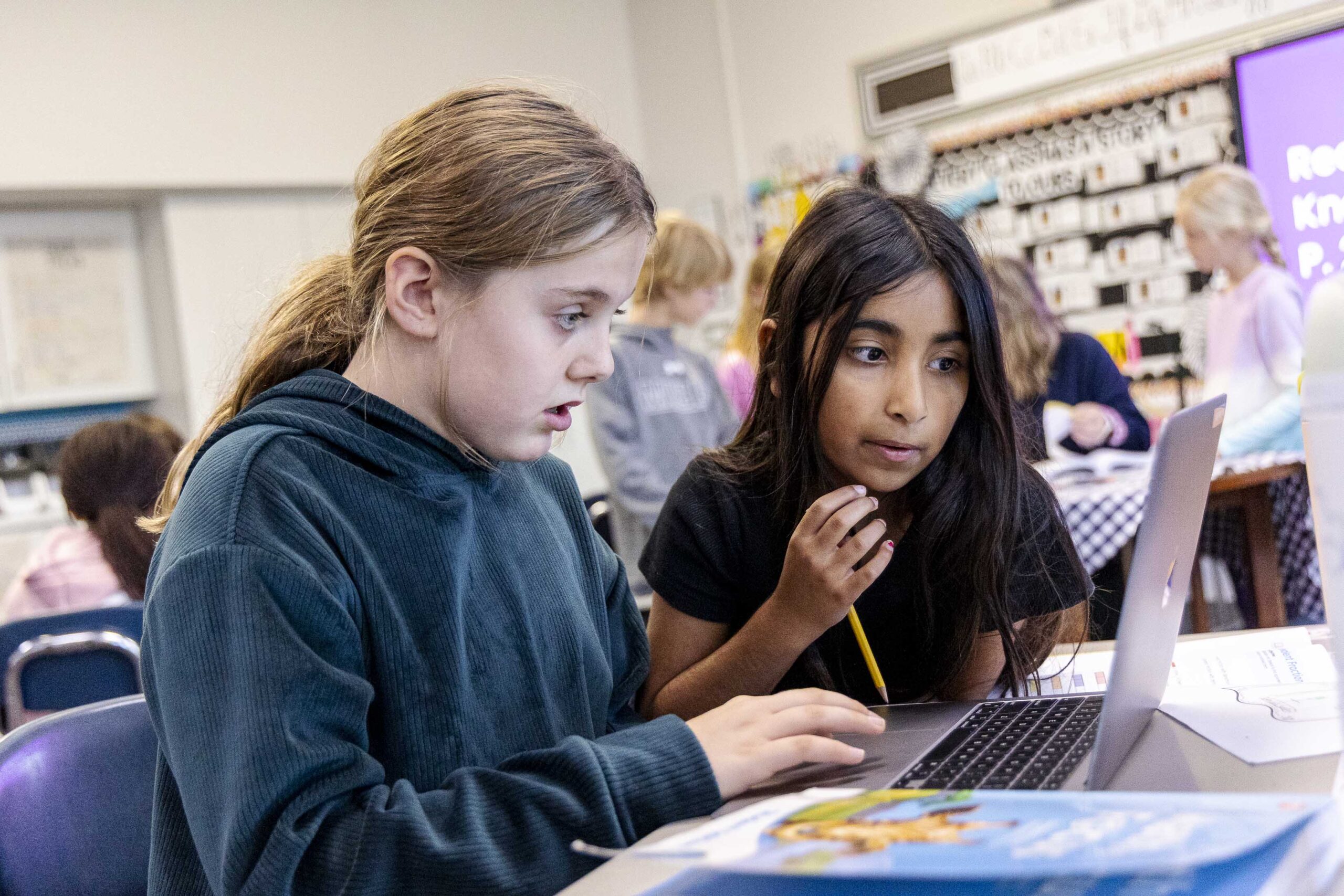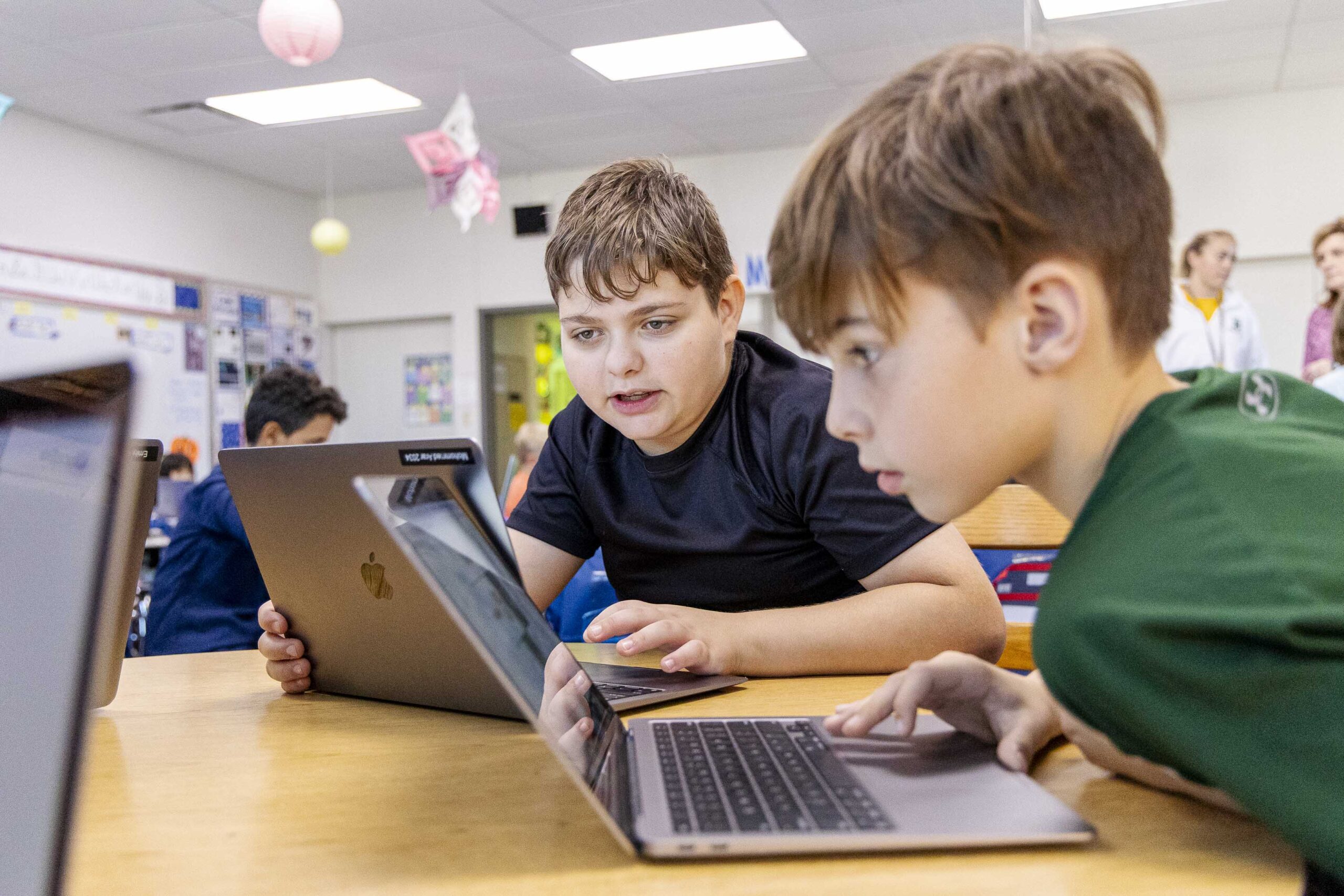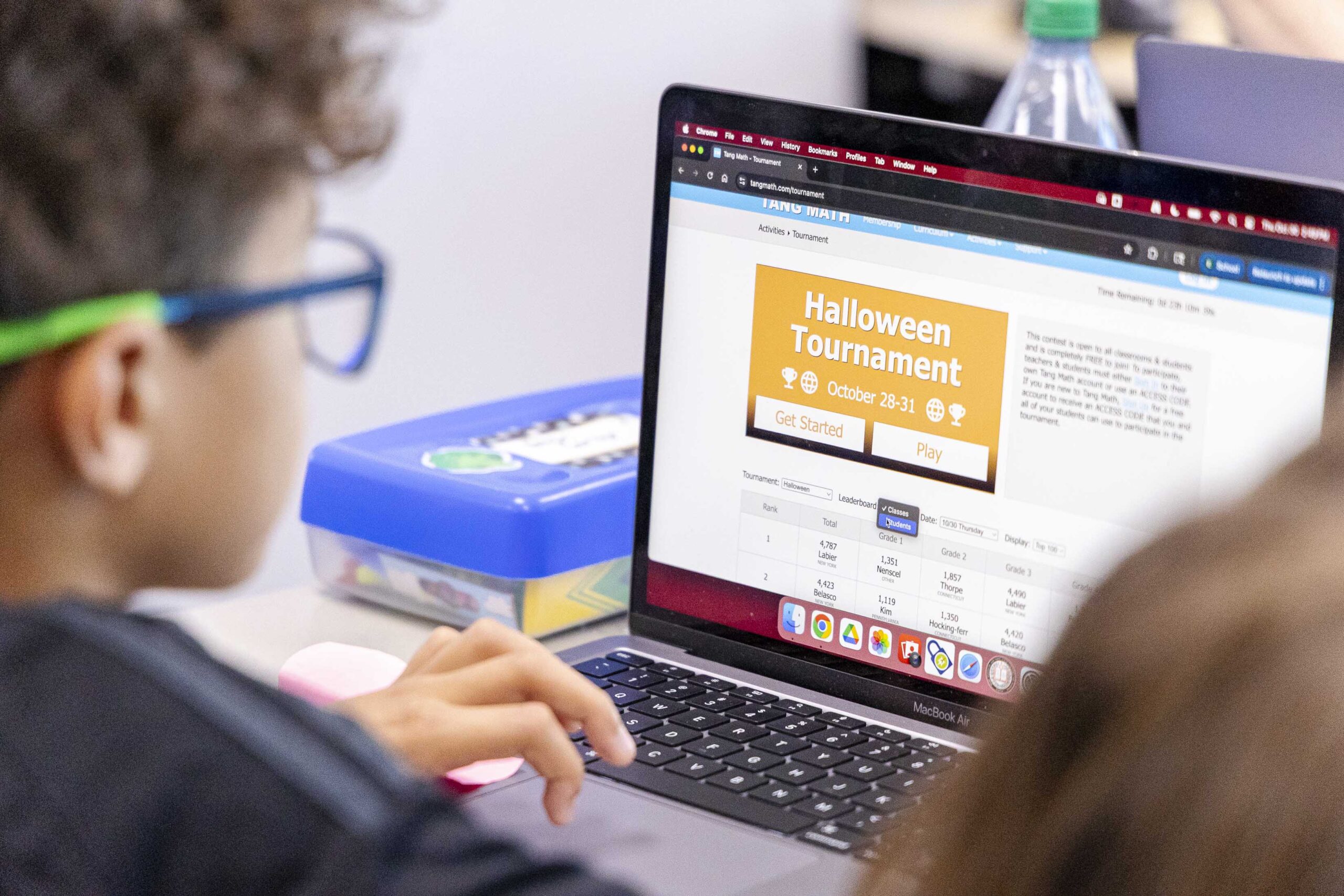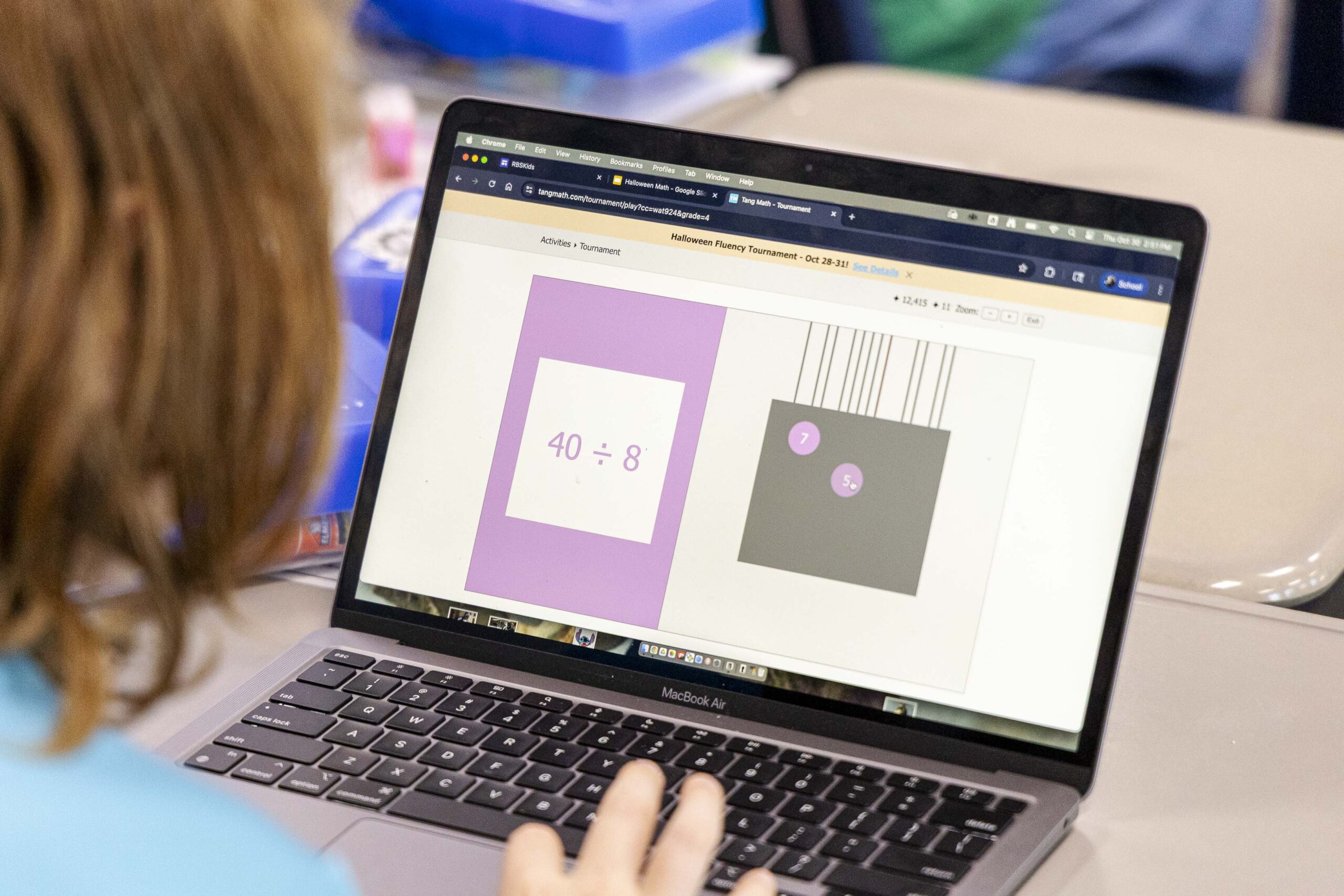In the days leading up to Halloween, the fourth-grade classrooms buzzed with pre-holiday costume and candy chatter and, surprisingly, a palpable competitive spirit for math. Walk into any of our three fourth-grade classrooms, and you might find students quietly focused on a laptop, slicing through one math puzzle after another, or jumping up and down with excitement at the latest leaderboard reveal.
This math energy was fueled by the Tang Math Tournament, an online nationwide challenge designed to boost number sense—the ability to manipulate numbers with ease—and fluency in solving problems quickly and accurately.
The nationwide challenge is for students in first through fifth grades, where they complete a series of engaging math puzzles and games on the Tang website. Those who finish the challenge receive bragging rights on the national leaderboard as well as a certificate. The biggest win, however, was watching the students’ motivation skyrocket after their names climbed the standings.
Fourth Grade Teacher Allison Antolik shared that mathematician Greg Tang is already a favorite in her classroom. “We often use his recorded lessons to give us another way to think about and approach a particularly challenging math concept,” she said. “He has a way of making math fun and approachable.” Midway through the challenge, the efforts were clearly paying off: MICDS had 14 students in the top 20 of the fourth-grade division. Donna Waters‘ class (4A) led the pack in first place in the division and second place overall, with Jen Van Dyken‘s (4C) in third, and Antolik’s (4B) in seventh.
Van Dyken said, “Greg Tang activities include puzzles that challenge the students to think critically.” She noted the surprising difficulty of the addition puzzles. She added that even seemingly simple concepts, such as coin money and analog clocks, proved challenging for fourth graders accustomed to digital tools. The games also included mechanics such as screen shaking when a student took too long to answer, which helped maintain high energy.
What did the competitors themselves think of the challenge? Julian S. ’34, who was the top MICDS finisher (2nd in division, 3rd overall), shared, “I memorized the games and patterns as I went. I learned a lot about fractions and money, too.” Motivation came easily for Julian. He said, “Seeing the podium and how I could get up there and stay there was my favorite part. I’m very competitive.”
Mohammed A. ’34 (4th in division, 6th overall) liked both the tech strategy of refreshing the page when the clock was ticking to get a new and possibly easier puzzle to solve, along with the math strategy of adding end numbers of a single or double-digit number to solve it quickly. He said, “My favorite parts were the multiplication games and just seeing myself up on the leaderboard. I was on top for about a day, but another guy from California kept beating us.”
“The math challenge helped me be more fact-fluent,” said Ronav B. ’34 (3rd in division, 4th overall). “I stayed up really late doing it. On the first day, some of the other students were way ahead of me, and after thinking about that, I wanted to pass them.” He enjoyed the challenge. “The addition part was really hard because there were some really complicated ones.”
Yassin E. ’34 (7th in division) quickly learned that you really have to focus. “My biggest motivation was Mrs. Van Dyken saying, ‘If you get in the top 10, you get 3,000 scholar dollars, top five you get 10,000, top three you get 15,000.’ With the scholar dollars*, you can buy pencils, gel pens, and coloring books,” he said. Yassin’s favorite part was the multiplication because, “You had the answers, but you had to look for them and sometimes you’d know it and press incorrectly and it was fun. I agree [with Ronav] that the addition was very hard.”
Seeing her class rise higher and higher on the leaderboard was a favorite for Addie Z. ’34. “It was high stress but worth it.”
Ultimately, teamwork was what really paid off. “My other classmates were motivating for me, and I felt excited because I wanted to be up on the leaderboard with them,” said Charlee H. ’34. “I got better at learning how to solve the problems without directions, and I finally got on the top board for our grade. It was fun when we all worked together as a team.”
The engagement was clearly off the charts. Van Dyken said, “The students were highly engaged and motivated by checking the leaderboards for both the class and individual standings.” Waters added, “Parents were thrilled that their children were choosing to do math at home instead of playing video games. The kids even helped each other improve!”
Lower School parent and Teaching Associate Kelly Licon said, “It was incredible to see Sofiana so excited about math! She was so motivated by the competition that she would even wake up early to participate. She would come home talking about strategies and could not wait to log in and compete. Watching her choose math challenges over other activities showed just how much she was enjoying it. We were so proud to see her confidence and love for learning grow.”
In addition to Julian, Ronav, Mohammed, and Yassin, three other MICDS fourth graders placed in the top ten divisionally: Ani V. ’34, Dexter H. ’34, and Cailey C. ’34.
The Tang Math Tournament concluded with an incredible show of participation: 602 classes and 1,147 students completed 564,917 puzzles nationwide. Our MICDS classes secured top spots among this highly competitive field.
The final class standings revealed:
- 4A: 1st place in fourth grade division & 3rd place overall
- 4C: 3rd place in division
- 4B: 5th place in division
The Tang Math Tournament has a challenge for just about any reason or season, so we expect that our Lower School mathematicians will continue to rise to meet it!
*Scholar Dollars is Van Dyken’s classroom currency system that allows students to “buy” items from the class Student Store.
